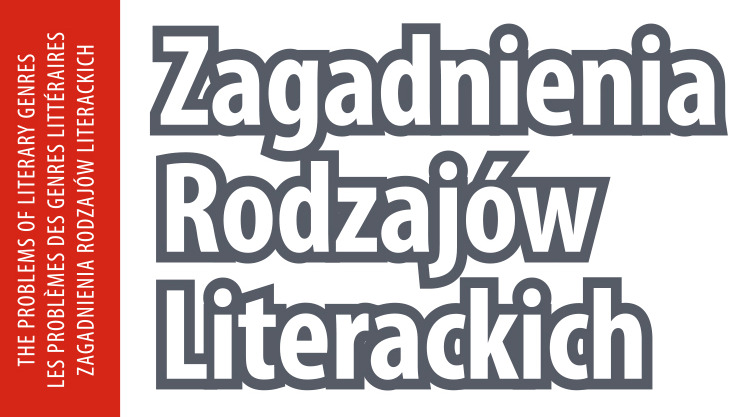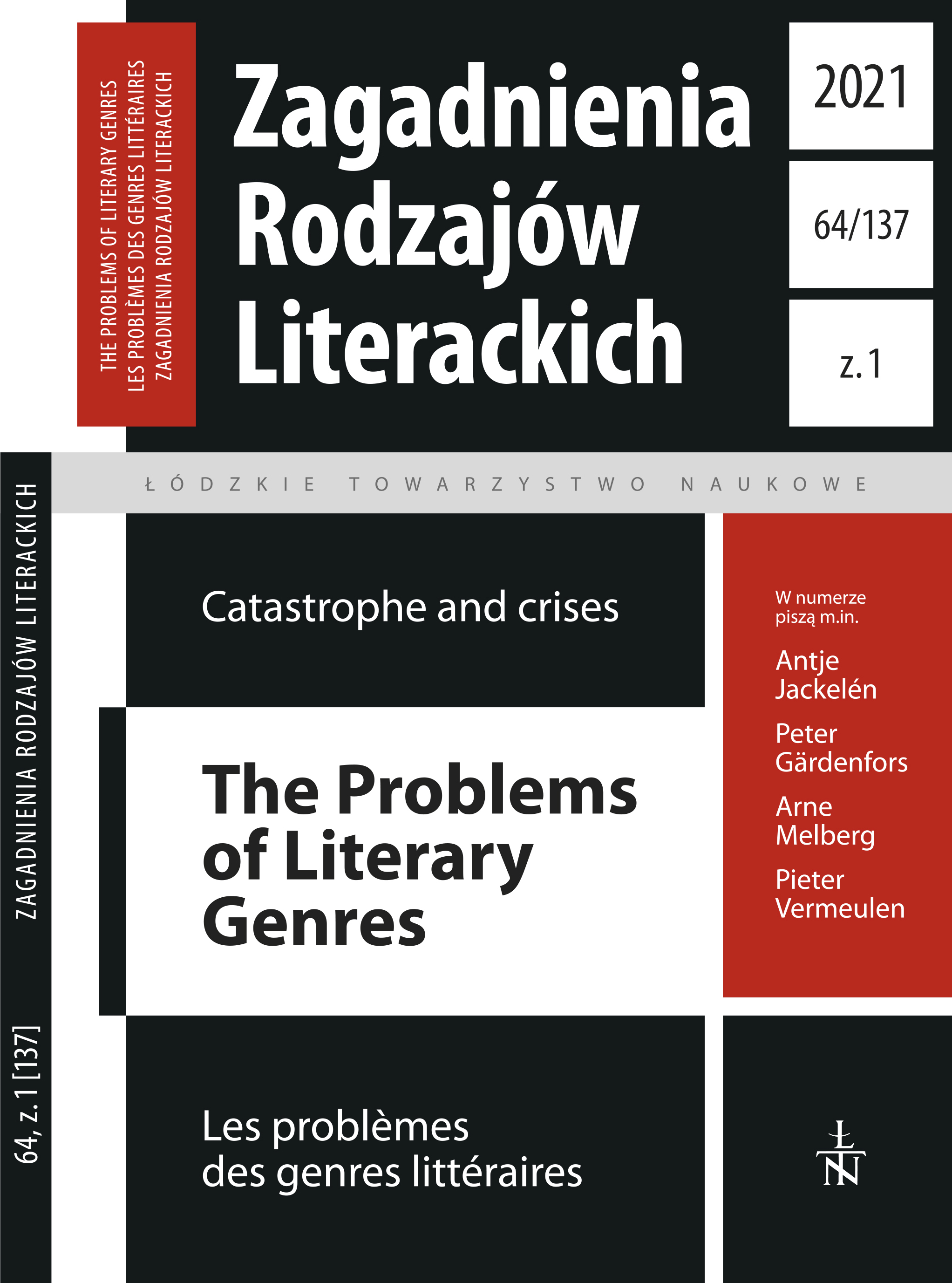חורבנות Żydowskie klęski w poezji Aleksandra Wata
DOI:
https://doi.org/10.26485/ZRL/2021/64.1/4Słowa kluczowe:
calamity, Babylon captivity, diaspora, galut, Holocaust, poetry of Aleksander WatAbstrakt
In Judaism, calamity [Hebr. חורבן churban, plural. חורבנות churbanot] is a cultural category that is not necessarily characterized as negative. It is viewed as a form of purification, which begins a crisis that finally leads to a religious and moral recovery. Three most important churbanot are usually recognized in the history of Israel: the destruction of Salomon’s Temple by Nebuchadnezzar (586 B.C.) followed by the Babylonian captivity, the destruction of Herod’s Temple by Titus (70 A.D.) with the subsequent dispersion of Israelites (Hebr. גלות [‘galut’]) and the Holocaust (1939–1945 A.D.), a planned and methodical extermination of European Jews.
All these experiences of Jewish disaster strongly resonated with the work of Aleksander Wat (1900–1967), a Polish poet with Jewish roots. Two of his poems are analyzed here. The first one (consisting of two parts), entitled Na melodie hebrajskie [‘To Hebrew Tunes’] (from the volume Wiersze [‘Poems’], 1957), explicitly mentions two churbanot: the Babylonian captivity and the diaspora of 70 A.D. The other poem is the third part of Pieśni wędrowca [‘The Songs of a Wanderer’] (from the volume Wiersze środziemnomorskie [‘Mediterranean Poems’], 1962). It allusively mentions the Holocaust as the greatest Jewish disaster. In each case, the churban helps to identify the heart of Jewish identity. Because the Shoah cannot be said to have any positive consequences, Wat treats it in mystagogical terms, i.e., as a mystery.
Liczba pobrań
Bibliografia
Biblia hebrajska (2003), Jerozolima (2003 .(תורה — נביאים — כתובים , ירושלים
Borzymińska Zofia (2003), Niewola babilońska [w:] Polski słownik judaistyczny. Dzieje — Kultura — Religia — Ludzie, t. 2, oprac. Z. Borzymińska, R. Żebrowski, Prószyński i S-ka, Warszawa, s. 229–230.
Brzewska Iwona Kamila (2003), Adlojada [w:] Polski słownik judaistyczny, Dzieje — Kultura — Religia — Ludzie, t. 1, oprac. Z. Borzymińska, R. Żebrowski, Prószyński i S-ka, Warszawa, s. 45.
Fackenheim Emil (1970a), The Commandment to Hope. A Response to Contemporary Jewish Existence [w:] The Future of Hope, red. Capps W.H., Fortress, Philadelphia, s. 68–91.
Fackenheim Emil (1970b), God’s presence in history: Jewish Affirmations and Philosophical Reflections, New York UP, New York.
Maybaum Ignaz (1962), The Faith of Jewish Diaspora, Vision Press, London.
Maybaum Ignaz (1965), The Face of God after Auschwitz, Polak & Van Gennep, Amsterdam.
Maybaum Ignaz (1980), Happiness Outside the State: Judaism, Christianity, Islam: Three Ways to God, Stocksfield, Northumberland; Oriel Press, Boston.
Rubenstein Richard Lowell (1992), After Auschwitz: History, Theology, and Contemporary Judaism, Auflage: Johns Hopkins UP, Baltimore, London.
Pietrych Krystyna (1999), O wierszach śródziemnomorskich Aleksandra Wata, IBL, Warszawa.
Pietrych Krystyna (2020), Włoskie inicjacje Aleksandra Wata, „Poznańskie Studia Polonistyczne. Seria Literacka”, nr 38, s. 157–179.
Przymuszała Beata (2016), Wiersze Wata o Zagładzie — wizja jako rodzaj świadectwa [w:]
Przymuszała B., Smugi Zagłady. Emocjonalne i konwencjonalne aspekty tekstów ofiar i ich dzieci, Uniwersytet im. Adama Mickiewicza w Poznaniu, Wyd. Naukowe UAM, Poznań, s. 109–125.
Wat Aleksander (1990), Dziennik bez samogłosek, oprac. K. Rutkowski, „Czytelnik”, Warszawa.
Wat Aleksander (1992), Poezje zebrane, oprac. A. Micińska i J. Zieliński, Społeczny Instytut Wydawniczy Znak, Kraków.
Wat Aleksander (2005), Korespondencja, t. I, wybrała, oprac., przypisami i posłowiem opatrzyła A. Kowalczykowa, Spółdzielnia Wydawnicza „Czytelnik”, Warszawa.
Venclova Thomas (1997), Aleksander Wat. Obrazoburca, Wydawnictwo Literackie, Kraków.
Żurek Sławomir Jacek (2004), Synowie księżyca. Zapisy poetyckie Aleksandra Wata i Henryka Grynberga w świetle tradycji i teologii żydowskiej, Wyd. KUL, Lublin.
Żurek Sławomir Jacek (2019), Topika judajska a topika Zagłady w najnowszej literaturze polskiej. Wstępne rozpoznania, „Teksty Drugie”, nr 4, s. 243–265.







